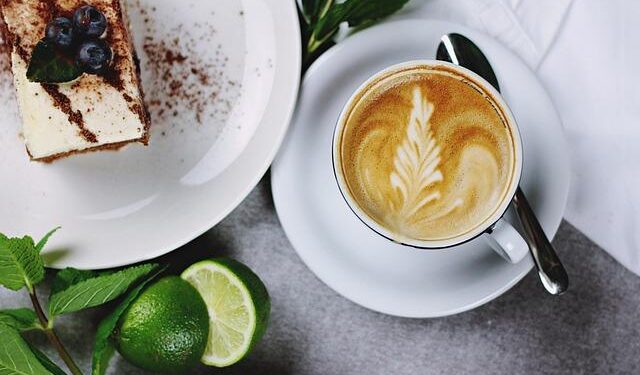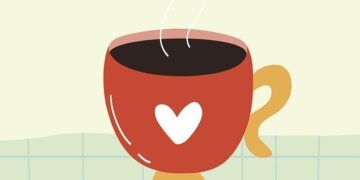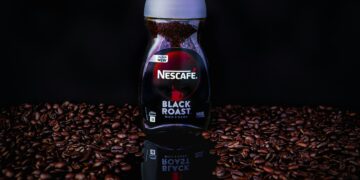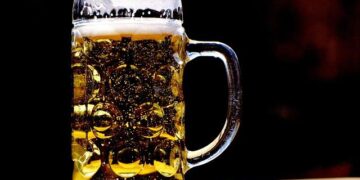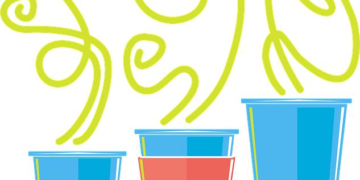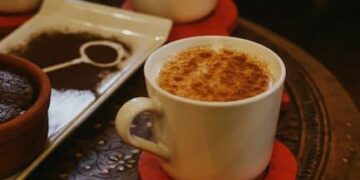Table of Contents
Introduction
In the landscape of modern daily rituals, the consumption of caffeinated beverages, particularly from global brands like Starbucks, holds a significant position.
For many, a morning coffee is not merely a habit but a functional necessity.
Caffeine (1,3,7-trimethylxanthine) is a potent central nervous system stimulant, and understanding its precise dosage is crucial for consumers aiming to manage their energy levels, sleep patterns, and overall health.
The U.S. Food and Drug Administration (FDA) has cited 400 milligrams of caffeine per day as an amount not generally associated with dangerous, negative effects for healthy adults.1
However, navigating the extensive Starbucks menu to stay within this, or any personal, guideline can be a complex task.
The caffeine content in a Starbucks beverage is not a monolithic figure; it is a dynamic variable influenced by a confluence of factors.
The primary determinants include the specific type of coffee bean and its roast profile, the method of preparation (drip brew, espresso, cold brew), the beverage’s construction (the ratio of coffee to milk and other ingredients), and the serving size.
A common misconception, for example, is that a bolder, more robust flavor profile signifies a higher caffeine content—an assumption that is frequently incorrect.
This report provides a definitive and exhaustive analysis of the caffeine content across the spectrum of Starbucks beverages.
Its objective is to move beyond simple data presentation and to illuminate the scientific and methodological reasons behind the varying caffeine levels.
By deconstructing the menu—from foundational brewed coffees and espresso-based drinks to teas and blended beverages—this analysis will equip the health-conscious and data-driven consumer with the knowledge required to make precise, informed decisions.
The ultimate goal is to empower individuals to tailor their caffeine consumption to meet their specific physiological needs and lifestyle preferences, transforming a routine purchase into a calculated choice.
Section 1: The Foundation of the Brew – An In-Depth Look at Drip Coffee
The most direct way to consume coffee at Starbucks is through its brewed drip coffee offerings.
These seemingly simple choices—Blonde, Medium, and Dark roast—represent the first and most significant variable in determining caffeine content.
Understanding the quantitative differences between these roasts is fundamental to managing caffeine intake effectively.
1.1 The Starbucks Roast Spectrum: A Quantitative Breakdown
Starbucks categorizes its core brewed coffees along a roast spectrum, from the light-bodied Blonde Roast to the rich, bold Dark Roast.
Each of these options possesses a distinct flavor profile and, critically, a significantly different caffeine concentration.
Using the Grande (16 fl oz) size as a standard for comparison reveals a clear hierarchy of potency.2
- Blonde Roast: This is the most caffeinated brewed coffee available at Starbucks. A Grande serving contains approximately 360 mg of caffeine. This high level places a single cup close to the FDA’s suggested daily limit of 400 mg.4
- Pike Place® Roast (Medium Roast): As the brand’s signature medium roast, Pike Place® offers a moderate caffeine level. A Grande serving contains approximately 310 mg of caffeine, positioning it as a potent but less intense option than the Blonde Roast.2
- Dark Roast: Contrary to popular belief, the Dark Roast coffees (such as Caffè Verona® or Italian Roast) contain the least amount of caffeine among the standard brewed options. A Grande serving has approximately 260 mg of caffeine.4
This data demonstrates a clear inverse relationship between the darkness of the roast and the caffeine content in the final cup.
A consumer choosing a Grande Dark Roast over a Blonde Roast reduces their caffeine intake by 100 mg, a substantial difference of nearly 30%.
1.2 The “Roast Paradox” Explained: Why Lighter Means Stronger
The discovery that a lighter roast yields a more caffeinated beverage is often counter-intuitive.
The common sensory association of “strong” coffee—characterized by dark, smoky, and robust flavors—does not correlate with pharmacological strength, or caffeine content.
The explanation lies not in the chemistry of the caffeine molecule itself, which is quite stable during roasting, but in the physical transformation of the coffee beans and the method used to measure them for brewing.
As coffee beans are roasted, they undergo significant physical changes.
They lose water content, causing them to lose mass, and they simultaneously expand in size, or “puff up.” The longer the roasting process, the more pronounced these effects become.
Consequently, a dark-roasted bean is physically larger and less dense than a light-roasted bean.5
The critical factor is that Starbucks, like many coffee shops, measures its coffee grounds for brewing by volume (i.e., with a scoop) rather than by weight.
Because the light-roast grounds are denser, a scoop of Blonde Roast contains more coffee mass than an identical scoop of the lighter, more voluminous Dark Roast grounds.
More coffee mass means more caffeine is extracted into the water during the brewing process.
If the coffee were measured by weight, the caffeine content between the roasts would be virtually identical.
This distinction between volume and weight measurement is the key to the “roast paradox”.5
This knowledge fundamentally decouples the sensory experience of flavor from the physiological effect of caffeine.
A consumer’s choice of brewed coffee can be guided by two independent variables: desired taste and desired caffeine level.
An individual seeking maximum caffeine but a mellower, more citrusy flavor profile should select the Blonde Roast.7
Conversely, a consumer who prefers a bold, rich taste but wishes to moderate their caffeine intake should opt for the Dark Roast.
The choice is not a trade-off but a two-dimensional decision.
Table 1.1: Comparative Caffeine Content in Brewed Coffee (mg)
To provide a clear, actionable reference, the following table details the caffeine content for Starbucks’ primary brewed coffees across all standard serving sizes.
| Roast Type | Short (8 fl oz) | Tall (12 fl oz) | Grande (16 fl oz) | Venti (20 fl oz) |
| Blonde Roast | 180 mg | 270 mg | 360 mg | 475 mg |
| Pike Place® Roast | 155 mg | 235 mg | 310 mg | 410 mg |
| Dark Roast | 130 mg | 195 mg | 260 mg | 340 mg |
Data sourced from.4
Note: The Grande size is 16 fl oz, but some sources may list it as 18 oz; this report uses the 16 fl oz standard for consistency where possible and relies on the most frequently cited caffeine values.
Section 2: The Espresso Engine – Deconstructing the Core of Lattes, Cappuccinos, and Americanos
While brewed coffee offers a high-caffeine foundation, the majority of the Starbucks menu is built upon a different platform: espresso.
Understanding espresso as a standardized, modular ingredient is the key to deciphering the caffeine content of a vast array of popular beverages, from lattes and cappuccinos to macchiatos and Americanos.
The caffeine in these drinks is highly predictable and formulaic, determined almost entirely by the number of espresso shots in the recipe.
2.1 The Espresso Shot as a Standard Unit of Measurement
The foundational data point for nearly all espresso-based beverages is the caffeine content of a single shot.
A standard Starbucks espresso shot contains approximately 75 mg of caffeine.5
This consistent, measurable unit serves as the primary building block for dozens of drinks, allowing for straightforward calculation of their total caffeine content.
Whether the shot is served alone, mixed with hot water, or combined with steamed milk, its caffeine contribution remains constant.
2.2 Standard Espresso Formulations: The “1-2-3 Shot Rule”
For most of the classic hot espresso beverages, Starbucks employs a standard formula for the number of shots per size.
This predictable recipe makes it easy for consumers to track their caffeine intake.
The typical formulation for drinks like the Caffè Latte, Cappuccino, Caramel Macchiato, and Caffè Mocha is as follows 4:
- Short (8 fl oz): 1 espresso shot (75 mg)
- Tall (12 fl oz): 1 espresso shot (75 mg)
- Grande (16 fl oz): 2 espresso shots (150 mg)
- Venti (20 fl oz): 2 espresso shots (150 mg) for some drinks, or 3 shots (225 mg) for others.
A notable exception to this rule is the Flat White, which uses ristretto shots (a more concentrated, shorter pull of espresso) and maintains 2 shots (130 mg) in the Tall size and 3 shots (195 mg) in both the Grande and Venti sizes, meaning the Venti Flat White has no more caffeine than the Grande.4
This standardization, however, contains a subtle but crucial variation between hot and iced beverages that can significantly impact caffeine consumption.
A hot Venti Latte is served in a 20 fl oz cup and contains 2 espresso shots for 150 mg of caffeine.
In contrast, an iced Venti Latte is served in a larger 24 fl oz cup to accommodate the ice and contains 3 espresso shots for a total of 225 mg of caffeine.
A consumer who switches from a hot Venti Latte to an iced one for the summer months would unknowingly increase their caffeine intake by 75 mg, a full 50% increase for the same named drink size.
This “Venti Trap” is a critical detail for any individual meticulously managing their daily caffeine allowance.
2.3 High-Caffeine Espresso Variants: The Americano and Shaken Espresso
While lattes and cappuccinos follow a standard caffeine formula, Starbucks offers other espresso-based drinks specifically designed to deliver a more potent caffeine kick.
These beverages deviate from the standard shot count, packing more caffeine into the same cup size.
- Caffè Americano: This beverage is made by combining espresso shots with hot water, resulting in a drink with the strength of espresso but the volume of a brewed coffee. It contains significantly more espresso shots—and therefore more caffeine—than a latte of the same size. The standard Americano recipe is 2:
- Tall (12 fl oz): 2 shots (150 mg)
- Grande (16 fl oz): 3 shots (225 mg)
- Venti (20 fl oz): 4 shots (300 mg)
A Grande Americano delivers 75 mg more caffeine than a Grande Latte (225 mg vs. 150 mg). - Iced Shaken Espresso: This line of beverages, including the popular Iced Brown Sugar Oatmilk Shaken Espresso, is explicitly formulated for a stronger effect. These drinks are made by shaking espresso shots with flavorings and ice before being topped with milk. A Grande Iced Shaken Espresso contains 3 shots of espresso, and often uses the higher-caffeine Blonde espresso, for a total of approximately 255 mg of caffeine.2 This makes it one of the most highly caffeinated espresso options on the menu, surpassing even the Grande Americano.
Table 2.1: Caffeine in Standard vs. High-Caffeine Espresso Beverages (Grande, 16 fl oz)
This table provides a direct comparison of the caffeine content in standard and high-caffeine espresso drinks, illustrating how recipe construction dictates potency.
| Beverage | Category | Number of Espresso Shots | Total Caffeine (mg) |
| Caffè Latte / Cappuccino | Standard Espresso | 2 | 150 mg |
| Caffè Americano | High-Caffeine Espresso | 3 | 225 mg |
| Iced Brown Sugar Oatmilk Shaken Espresso | High-Caffeine Espresso | 3 (Blonde) | 255 mg |
Data sourced from.2
Section 3: The Cold Front – A Comparative Analysis of Iced Coffee, Cold Brew, and Nitro
The proliferation of cold coffee options has become a cornerstone of the modern coffee shop menu, but it has also introduced a new layer of complexity for consumers tracking caffeine.
Starbucks offers three distinct cold coffee platforms—Iced Coffee, Cold Brew, and Nitro Cold Brew—each with a unique preparation method that directly influences its flavor profile and, most importantly, its caffeine concentration.
3.1 Brewing Method and Caffeine Extraction
The differences in caffeine among Starbucks’ cold coffees are not arbitrary; they are a direct result of the brewing science behind each beverage.
- Iced Coffee: The standard Starbucks Iced Coffee is prepared using the hot-brew method. A batch of coffee (typically the Pike Place® Roast) is brewed at a double strength and then chilled before being served over ice. This dilution with ice results in a moderate caffeine content. A Grande (16 fl oz) Iced Coffee contains approximately 165 mg of caffeine.4
- Cold Brew: In stark contrast, Cold Brew is made by steeping coarse-ground coffee in cold water for an extended period, typically around 20 hours. This slow, low-temperature extraction process, combined with a high coffee-to-water ratio, produces a coffee concentrate that is naturally smoother, less acidic, and significantly more caffeinated than hot-brewed coffee. This concentrate is then diluted with water and served over ice. A Grande Cold Brew contains 205 mg of caffeine.3
- Nitro Cold Brew: This is the most potent of the three options. It begins with the same Cold Brew concentrate but is then infused with nitrogen gas as it is dispensed from a tap. The nitrogen displaces oxygen, creating a rich, creamy texture and a cascading, Guinness-like foam head. Crucially, Nitro Cold Brew is served without ice, meaning the beverage in the cup is less diluted than standard Cold Brew. This higher concentration of coffee results in a very high caffeine content. A Grande Nitro Cold Brew contains 280 mg of caffeine.4
The sensory experience of these drinks can be misleading.
The smooth, low-acid flavor profile of Cold Brew might be perceived by some consumers as being “weaker” or less intense than the sharper, more traditionally “coffee-like” taste of a chilled hot-brew Iced Coffee.2
Similarly, the velvety, creamy mouthfeel of Nitro Cold Brew can effectively mask its high pharmacological potency.
This creates a potential pitfall for the uninformed consumer, who might incorrectly assume that a smoother or creamier drink is less caffeinated.
The data proves the opposite: the flavor profile and texture of cold coffee beverages are not reliable indicators of their caffeine strength.
A Grande Nitro Cold Brew (280 mg) contains nearly 70% more caffeine than a Grande Iced Coffee (165 mg), despite its deceptively smooth character.
Table 3.1: Caffeine Comparison of Cold Coffee Formats (mg)
The following table provides a definitive guide to the caffeine content in Starbucks’ main cold coffee offerings, clarifying the distinct potency of each brewing method across various sizes.
| Cold Coffee Type | Tall (12 fl oz) | Grande (16 fl oz) | Venti (20/24 fl oz) | Trenta (31 fl oz) |
| Iced Coffee | 120 mg | 165 mg | 235 mg | 285 mg |
| Cold Brew | 155 mg | 205 mg | 310 mg | 360 mg |
| Nitro Cold Brew | 215 mg | 280 mg | N/A | N/A |
Data sourced from.4
Note: Venti sizes for iced drinks are typically larger than for hot drinks.
Nitro Cold Brew is not typically offered in Venti or Trenta sizes.
Section 4: Beyond the Bean – Caffeine in Teas, Chocolates, and Blended Beverages
A comprehensive understanding of caffeine at Starbucks requires looking beyond coffee-only beverages.
Many other popular items on the menu, including tea lattes, hot chocolate, and Frappuccino® blended beverages, contain significant and sometimes “hidden” sources of caffeine.
These sources primarily include tea concentrates and chocolate-based ingredients.
4.1 The Potency of Tea Concentrates: Chai and Matcha Lattes
Two of the most popular tea-based beverages at Starbucks, the Chai Latte and Matcha Latte, derive their flavor and caffeine from potent, pre-sweetened concentrates rather than simple steeped tea bags.
This formulation results in a much higher caffeine content than one might expect from a tea drink.
- Chai Latte: The Starbucks Chai Latte is made from a “Chai Tea Concentrate,” which is a strong infusion of black tea, cardamom, black pepper, ginger, cinnamon, and other spices.11 Because it is made with a black tea base, it is naturally caffeinated. A Grande Chai Latte contains 95 mg of caffeine.1 This is more than double the caffeine found in a cup of brewed chai tea made from a standard tea bag, which typically contains around 40 mg.12
- Matcha Latte: Matcha is a finely ground powder of specially grown and processed green tea leaves. Unlike traditional brewed tea, where the leaves are steeped and removed, with matcha the entire leaf is suspended in the liquid and consumed. This results in a significantly higher concentration of both antioxidants and caffeine. A Grande Matcha Latte at Starbucks contains approximately 80 mg of caffeine.4
4.2 Brewed vs. Iced Teas: A Study in Dilution
For consumers who prefer a more traditional tea experience, Starbucks offers a variety of hot brewed and iced teas.
Here, the caffeine content is generally lower than in the tea lattes, but a counter-intuitive discrepancy exists between the hot and iced versions.
- Hot Brewed Teas: A Grande hot black tea, such as the Royal English Breakfast, is made with steeped tea bags and contains approximately 40 mg of caffeine.14 A Grande hot green tea, like the Emperor’s Clouds & Mist, contains a lower amount, typically in the range of 16-25 mg.15 Herbal infusions like Mint Majesty or Passion Tango are naturally caffeine-free.17
- Iced Teas: The preparation of iced teas often involves using a pre-brewed, double-strength tea concentrate that is then diluted with cold water and a large volume of ice. This dilution process results in a final beverage that, ounce for ounce, can be less caffeinated than its hot-brewed counterpart. A Grande Iced Black Tea and a Grande Iced Green Tea both contain approximately 25-30 mg of caffeine.19 This creates an anomaly: a consumer ordering an iced black tea receives less caffeine than if they had ordered the same size of hot black tea (25-30 mg vs. 40 mg). For those seeking a moderate caffeine boost from tea, the hot version is the more effective choice.
4.3 Hidden Caffeine: Chocolate Syrups and Frappuccinos®
Caffeine can also be found in ingredients where it might not be the primary consideration, most notably chocolate.
- Caffè Mocha and Hot Chocolate: The mocha sauce used in these beverages is made with cocoa, which naturally contains caffeine. This sauce adds approximately 25 mg of caffeine to a Grande-sized drink.2 Therefore, a Grande Caffè Mocha, which contains two espresso shots (150 mg) plus mocha sauce, has a total of 175 mg of caffeine—25 mg more than a standard Caffè Latte.2 A Grande Hot Chocolate, which has no coffee, contains 25 mg of caffeine derived solely from its chocolate ingredients.21 It is important to note that the White Chocolate Mocha sauce is made from cocoa butter rather than cocoa solids and is therefore caffeine-free.2
- Frappuccino® Blended Beverages: The caffeine content in this popular line of iced blended drinks varies widely depending on the core ingredients. A Grande Coffee Frappuccino®, which uses a coffee-based mix, contains 95 mg of caffeine.4 The caffeine content can increase if other caffeinated ingredients are added, such as mocha sauce. Crème-based Frappuccinos that do not contain coffee, tea, or chocolate are generally caffeine-free.
Table 4.1: Caffeine in Popular Non-Coffee and Hybrid Beverages (Grande, 16 fl oz)
This table provides a quick reference for the caffeine content of popular non-coffee and coffee-hybrid beverages, ranked by potency.
| Beverage | Caffeine (mg) | Primary Caffeine Source |
| Caffè Mocha | 175 mg | Espresso & Mocha Sauce |
| Chai Tea Latte | 95 mg | Black Tea Concentrate |
| Coffee Frappuccino® | 95 mg | Coffee Frappuccino Base |
| Matcha Tea Latte | 80 mg | Matcha Tea Powder |
| Hot Brewed Black Tea | 40 mg | Black Tea Leaves |
| Iced Black/Green Tea | 25-30 mg | Tea Concentrate & Dilution |
| Hot Chocolate | 25 mg | Mocha Sauce |
| Hot Brewed Green Tea | 16-25 mg | Green Tea Leaves |
| Herbal Tea | 0 mg | Herbal Infusion |
Data sourced from.4
Section 5: A Practical Guide to Caffeine Customization and Management
The extensive data and analysis presented in this report culminate in a single, powerful conclusion: the consumer has significant agency to control their caffeine intake at Starbucks.
By understanding the variables of roast, preparation, and recipe construction, any individual can move from being a passive recipient to an active architect of their beverage.
This section synthesizes the report’s findings into a series of practical, actionable strategies for both maximizing and minimizing caffeine consumption to meet specific goals.
5.1 Strategies for Maximizing Caffeine Intake
For consumers seeking the highest possible caffeine content for an energy boost or to overcome fatigue, the following customization tactics are most effective:
- Order a Blonde Roast: For brewed coffee, this is the single most impactful choice. A Venti Blonde Roast contains 475 mg of caffeine, exceeding the FDA’s daily advisory in one cup.4
- Add an Espresso Shot: This is a simple and universal method to increase caffeine in any beverage by approximately 75 mg per shot. A popular example is ordering a “Dirty Chai,” which is a Chai Latte with one or more added espresso shots.1
- Choose Americano over Latte: For the same size, a Caffè Americano is formulated with at least one more espresso shot than a Caffè Latte, providing a significant caffeine increase without added milk or calories.2
- Request Extra Tea Bags or Matcha Scoops: When ordering a hot tea, asking for a second tea bag is a simple way to increase the strength and caffeine content. For Matcha Lattes, requesting an extra scoop of matcha powder will directly increase the caffeine.13
- Order with “Light Ice”: In any iced beverage, requesting “light ice” or “no ice” increases the volume of the caffeinated liquid (coffee or tea) in the cup, thereby increasing the total caffeine consumed.13
5.2 Strategies for Minimizing Caffeine Intake
For individuals who are sensitive to caffeine, pregnant, or simply wish to reduce their intake for better sleep or less anxiety, the following strategies are highly effective:
- Choose a Dark Roast or Decaf: When ordering brewed coffee, selecting a Dark Roast over a Blonde Roast can reduce caffeine by over 100 mg for a Grande size. For a minimal dose, ordering decaffeinated coffee is the best option. It is crucial to remember that “decaffeinated” does not mean “caffeine-free.” A Grande Decaf coffee still contains about 25 mg of caffeine.4
- Request Fewer Pumps: For beverages made with concentrates (Chai Latte, Matcha Latte) or caffeinated syrups (Mocha), the caffeine content is directly proportional to the number of pumps used. Requesting fewer pumps is an effective way to reduce both caffeine and sugar content.1
- Choose Brewed Tea over Tea Lattes: Opting for a simple brewed tea bag instead of a concentrate-based latte dramatically reduces caffeine. A Grande brewed Chai Tea (~40 mg) has less than half the caffeine of a Grande Chai Latte (95 mg).12
- Opt for Herbal Teas: For a flavorful, warm, or refreshing beverage with absolutely no caffeine, herbal infusions are the ideal choice. Options such as Mint Majesty, Peach Tranquility, and Passion Tango are entirely caffeine-free.13
5.3 At-Home Brewing and Product Line Considerations
Starbucks acknowledges the consumer’s desire for caffeine control beyond its cafes.
The company’s “At Home” line of products, including K-Cup® Pods and ground coffee, is often marketed with explicit caffeine level descriptors.
The official Starbucks website allows consumers to filter products by categories such as “Decaf,” “Half Caff,” and even “2X Caffeine”.23
This retail strategy confirms that caffeine management is a key consideration for a significant portion of the brand’s customer base, and it provides another avenue for consumers to precisely control their intake.
Table 5.1: Master Caffeine Reference Chart (Grande, 16 fl oz)
This comprehensive chart serves as the ultimate quick-reference tool, ranking a wide selection of popular Grande-sized Starbucks beverages from most to least caffeinated.
| Beverage | Category | Caffeine (mg) |
| Blonde Roast | Brewed Coffee | 360 mg |
| Pike Place® Roast | Brewed Coffee | 310 mg |
| Nitro Cold Brew | Cold Coffee | 280 mg |
| Dark Roast | Brewed Coffee | 260 mg |
| Iced Brown Sugar Oatmilk Shaken Espresso | Espresso | 255 mg |
| Caffè Americano | Espresso | 225 mg |
| Cold Brew | Cold Coffee | 205 mg |
| Caffè Mocha | Espresso | 175 mg |
| Iced Coffee | Cold Coffee | 165 mg |
| Caffè Latte / Cappuccino | Espresso | 150 mg |
| Chai Tea Latte | Tea | 95 mg |
| Coffee Frappuccino® Blended Beverage | Blended | 95 mg |
| Matcha Tea Latte | Tea | 80 mg |
| Hot Brewed Black Tea | Tea | 40 mg |
| Iced Black/Green Tea | Tea | 25-30 mg |
| Hot Chocolate | Other | 25 mg |
| Decaf Pike Place® Roast | Brewed Coffee | 25 mg |
| Hot Brewed Green Tea | Tea | 16-25 mg |
| Herbal Tea (Mint Majesty, Passion Tango) | Tea | 0 mg |
This table synthesizes data from across all research sources to provide a comparative overview.
Values are approximate and based on standard recipes.
Conclusion
The caffeine content across the Starbucks menu is a complex but ultimately decipherable system.
The analysis demonstrates that caffeine levels are not arbitrary but are the predictable result of three core factors: the roast profile of the coffee, the specific preparation method employed, and the beverage’s recipe construction.
A consumer’s sensory perception of “strength” or flavor is an unreliable indicator of a drink’s pharmacological potency; the light-bodied Blonde Roast is substantially more caffeinated than the robust Dark Roast, and the smooth, creamy Nitro Cold Brew contains significantly more caffeine than a standard Iced Coffee.
The most powerful takeaway from this exhaustive review is the degree of control available to the consumer.
With a clear understanding of the principles outlined in this report—from the “roast paradox” and the espresso shot system to the nature of tea concentrates and hidden caffeine in chocolate—any individual can effectively manage their caffeine intake.
The choice between a 475 mg Venti Blonde Roast and a 0 mg herbal tea, and all the gradations in between, lies entirely with the informed customer.
By using this knowledge to make deliberate selections and specific customization requests, a Starbucks beverage can be precisely tailored to fit within any personal health regimen, including the general 400 mg daily guideline for healthy adults.
This report serves as a definitive tool to transform the daily coffee run from a routine habit into a conscious and well-managed element of a healthy lifestyle.
Works cited
- Amount of Caffeine in Starbucks Chai Latte: Suprising Number – coffee, accessed August 6, 2025, https://coffeefactz.com/amount-of-caffeine-in-starbucks-chai-latte/
- The Caffeine Content Of 23 Popular Starbucks Drinks, Ranked Lowest To Highest, accessed August 6, 2025, https://www.tastingtable.com/1325898/caffeine-content-starbucks-drinks-ranked-lowest-highest/
- How Much Caffeine Is In Starbucks Grande Coffee? 2025 Breakdown, accessed August 6, 2025, https://cornercoffeestore.com/how-much-caffeine-in-starbucks-grande-coffee/
- How Much Caffeine in a Cup of Starbucks Coffee? – CAFELY, accessed August 6, 2025, https://cafely.com/blogs/info/how-much-caffeine-starbucks-coffee
- Starbucks Caffeine Levels – Reddit, accessed August 6, 2025, https://www.reddit.com/r/starbucks/comments/13d7a78/starbucks_caffeine_levels/
- Caffeine content for various drinks in ascending order : r/starbucks – Reddit, accessed August 6, 2025, https://www.reddit.com/r/starbucks/comments/7e9q7w/caffeine_content_for_various_drinks_in_ascending/
- 21 Most Caffeinated Drinks at Starbucks in 2025 – Cozymeal, accessed August 6, 2025, https://www.cozymeal.com/magazine/most-caffeinated-drink-at-starbucks
- Caffè Latte: Nutrition: Starbucks Coffee Company, accessed August 6, 2025, https://www.starbucks.com/menu/product/407/hot/nutrition
- Caffeine chart | Center for Science in the Public Interest, accessed August 6, 2025, https://www.cspi.org/caffeine-chart
- Caffè Americano: Nutrition: Starbucks Coffee Company, accessed August 6, 2025, https://www.starbucks.com/menu/product/406/hot/nutrition
- Chai Latte: Nutrition: Starbucks Coffee Company, accessed August 6, 2025, https://www.starbucks.com/menu/product/466/hot/nutrition
- Does Starbucks Chai Tea Have Caffeine? – Foodzilla, accessed August 6, 2025, https://foodzilla.com/questions/does-starbucks-chai-tea-have-caffeine
- Which Starbucks Tea Has the Most Caffeine? I Tried Them All …, accessed August 6, 2025, https://britishtea.com/blogs/update/which-starbucks-tea-has-the-most-caffeine-i-tried-them-all-here-s-what-you-should-know
- Royal English Breakfast Tea: Nutrition: Starbucks Coffee Company, accessed August 6, 2025, https://www.starbucks.com/menu/product/446/hot/nutrition
- Emperor’s Clouds & Mist® Tea: Nutrition: Starbucks Coffee Company, accessed August 6, 2025, https://www.starbucks.ca/menu/product/873068751/hot/nutrition
- Emperor’s Clouds & Mist® Tea: Nutrition: Starbucks Coffee Company, accessed August 6, 2025, https://www.starbucks.com/menu/product/873068751/hot/nutrition
- Mint Majesty® Tea: Starbucks Coffee Company, accessed August 6, 2025, https://www.starbucks.com/menu/product/873068754/hot
- Iced Passion Tango® Tea: Nutrition: Starbucks Coffee Company, accessed August 6, 2025, https://www.starbucks.com/menu/product/461/iced/nutrition
- Iced Black Tea: Nutrition: Starbucks Coffee Company, accessed August 6, 2025, https://www.starbucks.com/menu/product/457/iced/nutrition
- Iced Green Tea: Nutrition: Starbucks Coffee Company, accessed August 6, 2025, https://www.starbucks.com/menu/product/459/iced/nutrition
- Hot Chocolate: Nutrition: Starbucks Coffee Company, accessed August 6, 2025, https://www.starbucks.com/menu/product/471/hot/nutrition
- Coffee Frappuccino® Blended Beverage: Nutrition – Starbucks, accessed August 6, 2025, https://www.starbucks.com/menu/product/483/iced/nutrition
- Explore Our Coffees | Starbucks® Coffee at Home, accessed August 6, 2025, https://athome.starbucks.com/product-overview
- Caffeine – Starbucks ® coffee, accessed August 6, 2025, https://athome.starbucks.com/product-category/caffeine
